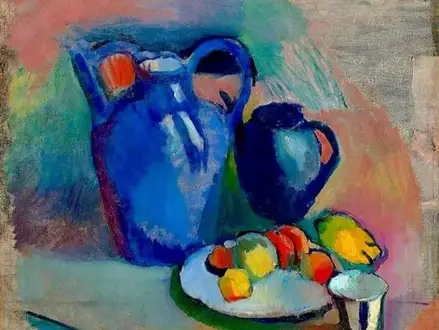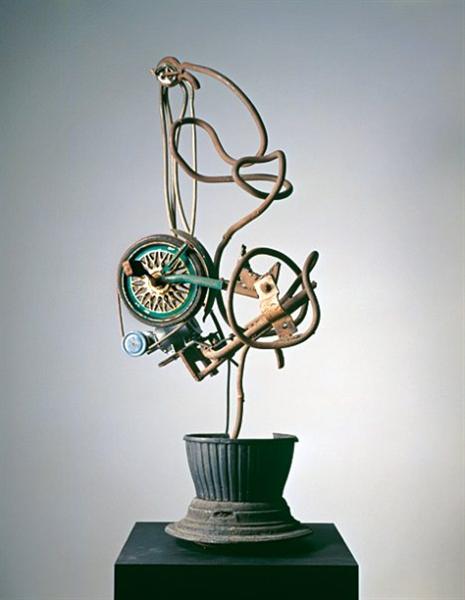
La cruche bleue (Still Life with blue jug) by Henri Matisse 1900 – 1903
A pair of blue jugs, a plate of fruits and a silver beaker exist in both grounded and uncertain, indefinite space and partly exist flouting in space and firmly set on a foggy undefined surface. See how forms are built using mainly unblended pure colour and the use of the diagonal, slanting edges of the assumed tabletop setting up an added unsettled dynamic.
The subject and style are reminiscent of and show influences from the remarkable ‘Father of Modern Art’, Paul Cezanne and surrounded by like-minded artists such as Derain and Vlaminck.
The characteristics of Fauve paintings are wild, dynamic brushwork, intensified colours, a simplification of form becoming further abstracted, and extreme development from the searing work of Van Gough and the Post-Impressionists.
Fauvism, “The wild beasts”, was the defining beginning of the period known as Modern art at the start of the 20th century, breaking away from the now, much loved Impressionist artists.
The large cruche stands firm and grounded whereas the other jug seemingly floats in space, ungrounded. The objects are surrounded by unrelated patches of thinned colour.
To the top right is a patch of grey tones in a thin wash which appears to be a tall object on a platform or plinth and this patch gives a little feeling of depth to the perspective. See how a random patch of bright red colour through the hole of the jug handle sets up a compositional dynamic with the raw patches of red patches describing the fruits.
The plate of fruits are solid objects firmly set with depth and weight. The silver beaker reminds me of the Dutch still-life painters from the Golden Age displaying their skills of shiny metallic surfaces, a nod towards the masters of the past.
Colour intensifies and goes beyond the simple, natural local colour describing objects. Colour breaks free and becomes highly charged emotion rather than description. Later, colour breaks free completely from local colour, green grass becomes bright yellow, and blue skies become red! Fauvism is wild, exciting and dynamic.
The double-handled cruche is a typical French water carrier usually used for local and peasant labourers working the fields and harvesting. The glazed surface would keep the water cool and workers would pour the water directly to drink without touching the spout and pass it around.
This image does indeed ‘jump out’ in colour, painting bravado, originality and modernity making the period spanning from the advent of the Impressionists as a grand finally to the masters of the old transitioning to the brave new century of Modern Masters, making this one of the most exciting periods in Art history.






















